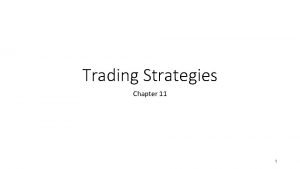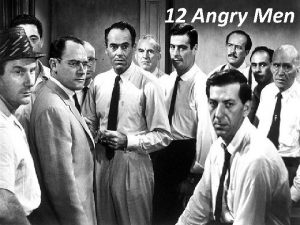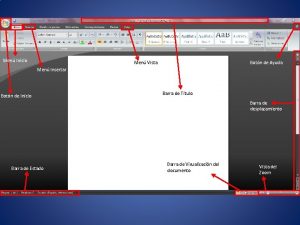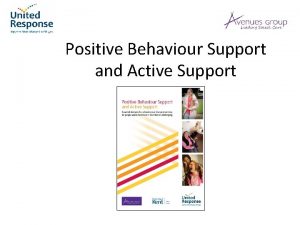A Call to Men Support for men to































































- Slides: 63

A Call to Men Support for men to stop being abusive and support for their families to stay safe Jonathan Fowler acalltomen@ngocaribbean. org Trinidad, March 2017

Aims To have an understanding of: What Domestic Violence between partners is – and isn't Why we should work with men who are being abusive What a good practice model of this work looks like Some of the methods and tools of this work Using this approach in our places of work What is needed here?

Definition of Domestic Violence 'Domestic Violence includes physical, sexual, emotional or psychological or financial abuse committed by a person against a spouse, child, any other person who is a member of the household or dependant' Domestic Violence Act of Trinidad & Tobago (1999)

What is abuse? Discussion

Domestic Violence is. . . systematic patterned behaviour designed consciously or sub-consciously to control and dominate a partner or a former partner

Domestic Violence is not. . . a minor tiff or an occasional heated argument loss of temper or self-control caused by alcohol and/or drugs

Types of Violence Between Intimate Partners (based on Johnson, 2008) Violence as part of a pattern of coercive control in a relationship, where one partner tries to control their partner in different ways, that can include physical violence or the threat of violence (Intimate Terrorism) Violence that both partners use towards each other when arguing (Situational Couple Violence) Violence used by a partner as defence when he or she has previously been the victim of ongoing violence and coercive control in the relationship (Victim Retaliation)

Which of the following characteristics is most commonly found in perpetrators of domestic violence? a) fear of abandonment b) a belief in entitlement c) poor impulse control d) low self-esteem

Which of the following characteristics is most commonly found in perpetrators of domestic violence? a) fear of abandonment b) a belief in entitlement c) poor impulse control d) low self-esteem

Answer b) a belief in entitlement (The Batterer as Parent, Bancroft, 2002)

Characteristics of Perpetrators Superiority Ownership/Possession Entitlement Manipulative Sometimes ability to perform under observation Contradictory statements and behaviours Externalisation of responsibility Minimisation, denial and victim-blaming Serial abuse Confusion of love and control

How do our beliefs influence was we do? Events DON'T cause me to feel a certain way Patterns of thinking can become an unhelpful thinking style

CBT (Rational Emotive Behavioural Therapy – see also Cognitive Therapy) Emotional disturbances (and the behaviour they lead to) are the Consequences of Beliefs (B) about Adverse (or Activating) events (A)

Central to CBT approach is a focus on BELIEFS (and linking them to behaviour) We explain how this works We examine underlying beliefs during dialogues with men We use specific tools to help explore beliefs (we'll look at this more tomorrow) We use educational materials around men's commonly held shared beliefs e. g. The Man Box

What are some unhelpful thinking styles? Do I recognise any of these? ! Mental filter Jumping to conclusions Personalisation Catastrophsing Black & white thinking Shoulding & musting Overgeneralisation Labelling Emotional Reasoning Magnification & minimisation

Biderman's Chart of Coercion Isolation Exhaustion Threats Humiliation Control or Distort Perceptions Demonstrating Superiority or Power Enforcing Trivial Demands Occasional indulgences

Why work with perpetrators? 1 in 3 women experience physical violence within an intimate relationship, at some stage in their lives 2 women per week are murdered by a current or former partner (in UK – how many in Caribbean? ? ) Domestic Violence is a child protection issue Domestic Violence is closely linked to mental health issues Where there is violence there is almost always sexual abuse of women There are strong links between the sexual abuse of women and the sexual abuse of children

Why should we work with perpetrators? Your response and your example to the community matters Your influence could contribute as much as any other to a safer community If we can change the behaviour of these men we can have a wider impact than approaches that focus entirely on establishing safety

Model of Best Practice Holding the perpetrator responsible for his actions - visible, accountable and responsible Monitor behaviour - ongoing risk assessments Put women and children in touch with women's safety worker so no longer isolated Joint working with Police, child protection, alcohol and drug agencies and other agencies – a coordinated community approach Agencies get trained Programme of behaviour change Evaluation

Most important! THE SECRET IS OUT

Essential Roles in teams working with perpetrators Women's Safety Work Case Manager/Co-ordinator Facilitator/Individual worker External supervision (& ongoing training)

Women's Safety Work Key Tasks Safety planning Providing information to women: – – regarding perpetrator work about her partner's attendance Facilitation of referrals to local services Risk management Evaluation of change – and providing this information to other team members Contribution to co-ordinated community response

Case Manager/Co-ordinator Key Tasks Ongoing risk assessment Keeping contact with the man whilst on programme Motivating him and reinforcing learning Monitoring man's attendance at group or individual sessions Evaluate and act on information which affects victim or child safety Progress reviews with facilitators Completion of tasks and from missed sessions

Facilitator/Session Worker Key Tasks Keeping the man focused on the issues of violence, abuse, control, entitlement and change Facilitate reflective and critical thinking Maintain compassionate and challenging culture – not collusive Provide information and teach non-controlling relationship skills Facilitate a healthy process Contribute to an inter-agency effort to hold participants accountable for further acts of violence

Working with the abuser Involves: Helping men understand why they use violent and abusive behaviour and the effects of this behaviour on victims, children, others and self To encourage men to take responsibility for their abusive and violent behaviour in relationships To motivate men to take specific, positive steps to change their behaviour in their relationships To encourage men how to use non-controlling behaviour strategies in their relationships in order to prevent future violence and abuse

Aims of the Programme To promote and ensure safety of victims and their children To prevent/mitigate the risk of re-offending Promote change in abusive/harmful behaviour Work collaboratively with other agencies to manage risk constructively

Influences Duluth Pro-feminist theory CBT Social Learning Theory Good Lives Model Motivational Interviewing

Duluth Developed in Duluth, Minnesota in 1980 – and still going strong! The Duluth Model was the first to outline multidisciplinary procedures to protect and advocate for victims Development of a Coordinated Community Response Discovered “Anger Management” with domestic abuse perpetrators can increases risk for victims Developed Curriculum based on the experiences of victims

Pro-feminist Theory “Domestic violence is a consequence of patriarchy, and part of a systematic attempt to maintain male dominance in the home and in society. Typically, violence against women is explained in terms of a power struggle, for feminists argue that in a patriarchal society, those with all the power -males—must resort to violence when their position of dominance is threatened. ” - Steven R. Tracy “Patriarchy is not responsible for an individual husband’s violent action toward his wife. It does, however, create an environment ripe for abuse. A weakened immune system does not create the virus that leads to deadly infection, but it provides the environment in which the virus can thrive and do its killing. Patriarchal beliefs weaken the marital system so that the deadly virus of violence can gain a stronghold. ” - Cynthia Ezell

Social Learning Theory “Behaviour is learned from the environment through the process of observational learning. Humans are active information processors and think about the relationship between their behaviour and its consequences. The degree of which behaviour continually executed depends on whether this behaviour is either reinforced or punished by others. Observational learning could not occur unless cognitive processes were at work. ” Albert Bandura

Good Lives Model Ward & Stewart (2003) argue: “the most effective way to reduce risk is to give individuals the necessary conditions to lead better lives (‘good lives’) than to simply teach them how to minimise their chances of being incarcerated. ”

Motivational Interviewing What is the cycle of change? Different stages, different interventions Rolling with resistance – but not colluding!

Stages of Change Pre contemplation Contemplation Preparation Action Maintenance Lapse

Principles of Motivational Interviewing Express empathy Develop discrepancy Avoid argument Roll with resistance Support self-responsibility

Structure of a Group Work Programme Variations in structure. Themes addressed include: What is abuse? Being a man Intents (Sexual) respect Attachment Emotion Management CBT Beliefs & expectations Impact on partner Impact on children & responsible parenting Active listening Conflict Resolution, Negotiation & Fairness Loving & healthy relationships - partnerships Emotional abuse Intimidation & (non) threatening behaviour Accountability Support & Trust

Who is the group for? (non-court ordered programmes) The group is for men who are abusive in their relationships and who are motivated to change their abusive behaviour Most men self refer The relevant (ex)partners are always offered support from our Women's Safety Worker

Acceptance Criteria The man must agree to provide contact details for his (ex)partner so that the Women's Safety Worker can offer a support service to her The man must agree to attend the programme voluntarily and recognise that there is a problem with his relationship or previous relationship The man must be 21 years or older The man must not be due to attend court or be undergoing criminal proceedings

Pre-Group Assessment One or more pre-group assessments are completed prior to commencing the group. Each assessment session can take around 3 hours Occasionally men are seen one-to-one prior to attending the group The men sign a contract prior to starting the group

Referral Process The men refer themselves to the programme Voluntary participation is paramount and helps us assess his motivation to change his behaviour He may be signposted to the programme through another agency. If an agency wishes to signpost the service, we would ask them to suggest that the man contacts the project coordinator direct.

Risk Assessment The assessment includes a very comprehensive risk assessment which has to be completed prior to the man starting the group There are ongoing risk assessments involving the Coordinator, the Women's Safety Worker and the Group Facilitators. The safety of women and children is paramount

Format for the Group Each session is 2 hours long – with a tea break about midway. The group is in two sections: A check-in which is a brief update from each man – focusing on their behaviour within the relationship during the preceding week This is followed by the module work for the session

Format for the Group Each session is 2 hours long – with a tea break about midway. The group is in two sections: A check-in which is a brief update from each man – focusing on their behaviour within the relationship during the preceding week This is followed by the module work for the session

1 to 1 support and feedback At the end of each module a report is completed by the 2 group leaders, which is later shared with the men. At the end of each module each group member completes a questionnaire on how he thinks the group is going and how the group could be developed etc. There is a 1 to 1 meeting every module to look at their individual action plan, to ascertain level of progress and to continue to develop noncontrolling behaviours

END OF DAY 1

Men's conditioning Tony Porter TED talk – men's ideas about what it means to be a man Refresher of Day 1

Using Group Tools inside and outside the group The groups provide an ideal context for this work. BUT many tools and how we think as facilitators, can be used OUTSIDE of group work.

Some of the tools we use in the group sessions Power and Control vs. Equality wheels The Power Pyramid Assertiveness The use of time-outs and self-talk Anger and poor emotional literacy Control logs / Iceberg

Some of the tools we use in the group sessions…continued Taking women's perspectives Videos and scenarios (in conjunction with other tools) Role play & Skills practice Handouts about non-controlling behaviour and other educational handouts (e. g around children's needs)

Some of the tools we use in the group sessions…continued Taking women's perspectives Videos and scenarios (in conjunction with other tools) Role play & Skills practice Handouts about non-controlling behaviour and other educational handouts (e. g around children's needs) Tools overview

Power & Control vs. Equality Wheels Power & control and violence & the threat of violence as part of an overall pattern of abuse Tools overview

The Power Pyramid A tool for analysing the impact and motivations for actions Tools overview

Fair arguing. Assertiveness, aggression and passivity Not being aggressive doesn't mean becoming passive Tools overview

Time outs and self-talk Creating an agreed time out plan Knowing how to calm yourself Becoming aware of the self-talk that serves to escalate disagreement and finding and using alternatives Tools overview

Communication and emotional literacy – link with anger Becoming more aware of how communicating occurs and finding other ways to do this Becoming more aware of the range of emotions that are experienced and finding adequate ways to deal with them – they don't need to lead to anger

Control Logs A way to analyse situations in order to: Become more aware of what happens Look at the intentions, thoughts & emotions Control Log involved See how behaviour is rooted in beliefs that can be discussed and questioned Become aware of how responsibility is avoided through minimisation, denial and blame Become aware of the impact of abuse now and in the context of past abuse Examine alternative ways to behave

Practice Group Sessions around a theme The themes we looked at yesterday can be used to explore how a group session would look: What is abuse? Being a man Intents (Sexual) respect Attachment Emotion Management CBT Beliefs & expectations Impact on partner Impact on children & responsible parenting Active listening Conflict Resolution, Negotiation & Fairness Loving & healthy relationships - partnerships Emotional abuse Intimidation & (non) threatening behaviour Accountability Support & Trust

Some other factors “I

Dealing with Denial “I didn't do it, but if I did I had a good reason” Minimization, Denial, and Attributions of Blame Among Male and Female Domestic Violence Offenders Kris Henning, Angela R Jones, Robert Holdford

The Group Culture A supportive environment is created where men are encouraged to speak openly This provides a context in which they can be challenged by us There always men at different stages of the programme. They are encouraged to support and challenge each other

Developing Critical Thinking The Problem-Solving Method is described as follows: 'This method starts from the life situation and reality of people. Their life situation is made in a problem-posing situation. The method concentrates on showing people that they have the right to ask questions on the hows and whys, that they have the right to find out about causes and influences in their lives. ' Carien Fritz – Theory of Paolo Freire

Non-Controlling Behaviour Time out Positive self-talk Coping with jealousy Letting go Acknowledging women's fear Accepting women's anger Communicating thoughts and feelings Accepting criticism

Non-Controlling Behaviour continued. . . Recognising anger cues Using assertive behaviour Being aware of non-verbal cues Not needing to win and non-violent conflict-resolution Problem solving Learning to listen Challenging sexism and violence against women Understanding power

Five Steps to Emotion Management Recognise the physical signs Calming Recognise thoughts Challenge thoughts (Replace thoughts)
 Protective put payoff
Protective put payoff Long call short call
Long call short call Gartner magic quadrant call recording
Gartner magic quadrant call recording Signal words
Signal words White men are saving brown women from brown men
White men are saving brown women from brown men Claes martinsson
Claes martinsson En lathund för arbete med kontinuitetshantering
En lathund för arbete med kontinuitetshantering Bra mat för unga idrottare
Bra mat för unga idrottare Skapa med geometriska former
Skapa med geometriska former Ledarskapsteorier
Ledarskapsteorier Svenskt ramverk för digital samverkan
Svenskt ramverk för digital samverkan Datorkunskap för nybörjare
Datorkunskap för nybörjare Fredsgudinna
Fredsgudinna Vilken grundregel finns det för tronföljden i sverige?
Vilken grundregel finns det för tronföljden i sverige? Steg för steg rita
Steg för steg rita Vad är densitet
Vad är densitet Ministerstyre för och nackdelar
Ministerstyre för och nackdelar Bamse för de yngsta
Bamse för de yngsta Tack för att ni lyssnade bild
Tack för att ni lyssnade bild Tillitsbaserad ledning
Tillitsbaserad ledning Bat mitza
Bat mitza Sju för caesar
Sju för caesar Anafor dikt
Anafor dikt Nyckelkompetenser för livslångt lärande
Nyckelkompetenser för livslångt lärande Gibbs reflekterande cykel
Gibbs reflekterande cykel Stål för stötfångarsystem
Stål för stötfångarsystem Vishnuismen
Vishnuismen Adressändring ideell förening
Adressändring ideell förening Verktyg för automatisering av utbetalningar
Verktyg för automatisering av utbetalningar Aktiv expektans
Aktiv expektans Jag har gått inunder stjärnor text
Jag har gått inunder stjärnor text Stig kerman
Stig kerman Strategi för svensk viltförvaltning
Strategi för svensk viltförvaltning Varians
Varians Vad är verksamhetsanalys
Vad är verksamhetsanalys Tack för att ni har lyssnat
Tack för att ni har lyssnat Klassificeringsstruktur för kommunala verksamheter
Klassificeringsstruktur för kommunala verksamheter Returpilarna
Returpilarna Cks
Cks Läkarutlåtande för livränta
Läkarutlåtande för livränta Påbyggnader för flakfordon
Påbyggnader för flakfordon Tack för att ni lyssnade
Tack för att ni lyssnade Inköpsprocessen steg för steg
Inköpsprocessen steg för steg Egg för emanuel
Egg för emanuel Tack för att ni har lyssnat
Tack för att ni har lyssnat Var finns arvsanlagen
Var finns arvsanlagen Tidbok yrkesförare
Tidbok yrkesförare Rutin för avvikelsehantering
Rutin för avvikelsehantering Myndigheten för delaktighet
Myndigheten för delaktighet Presentera för publik crossboss
Presentera för publik crossboss Fspos vägledning för kontinuitetshantering
Fspos vägledning för kontinuitetshantering Debattinlägg mall
Debattinlägg mall Kung dog 1611
Kung dog 1611 Tobinskatten för och nackdelar
Tobinskatten för och nackdelar Referatmarkering
Referatmarkering Luftstrupen för medicinare
Luftstrupen för medicinare Shingelfrisyren
Shingelfrisyren Programskede byggprocessen
Programskede byggprocessen Brant karttecken
Brant karttecken Vätsketryck formel
Vätsketryck formel Samlade siffror för tryck
Samlade siffror för tryck Rbk fuktmätning
Rbk fuktmätning Elektronik för barn
Elektronik för barn Borra hål för knoppar
Borra hål för knoppar























































































